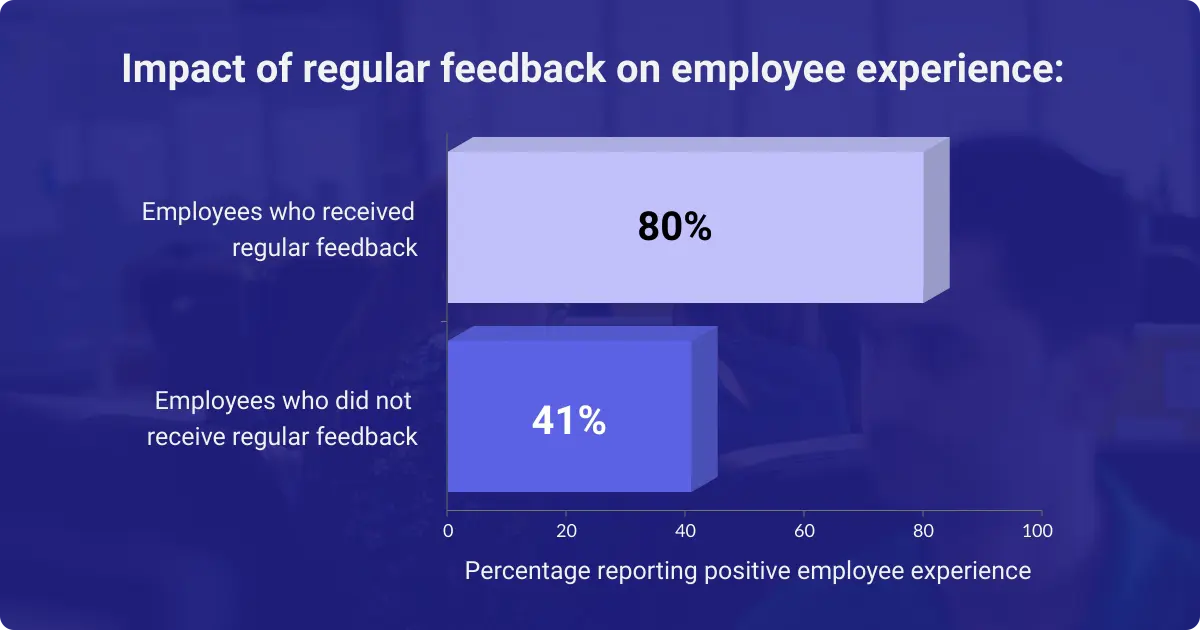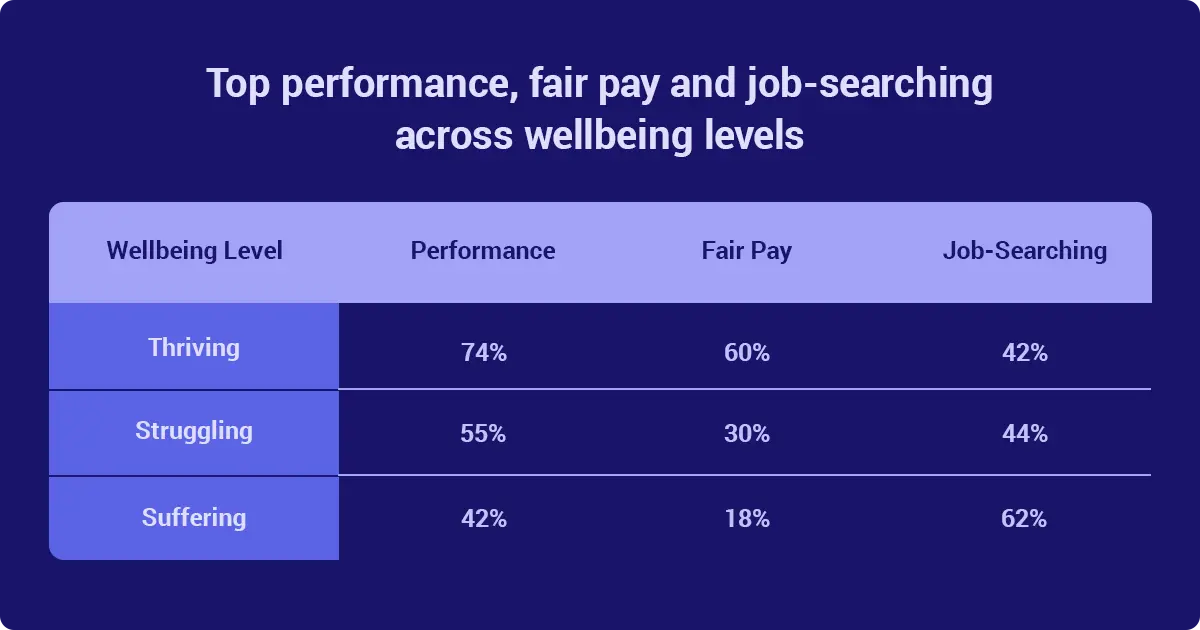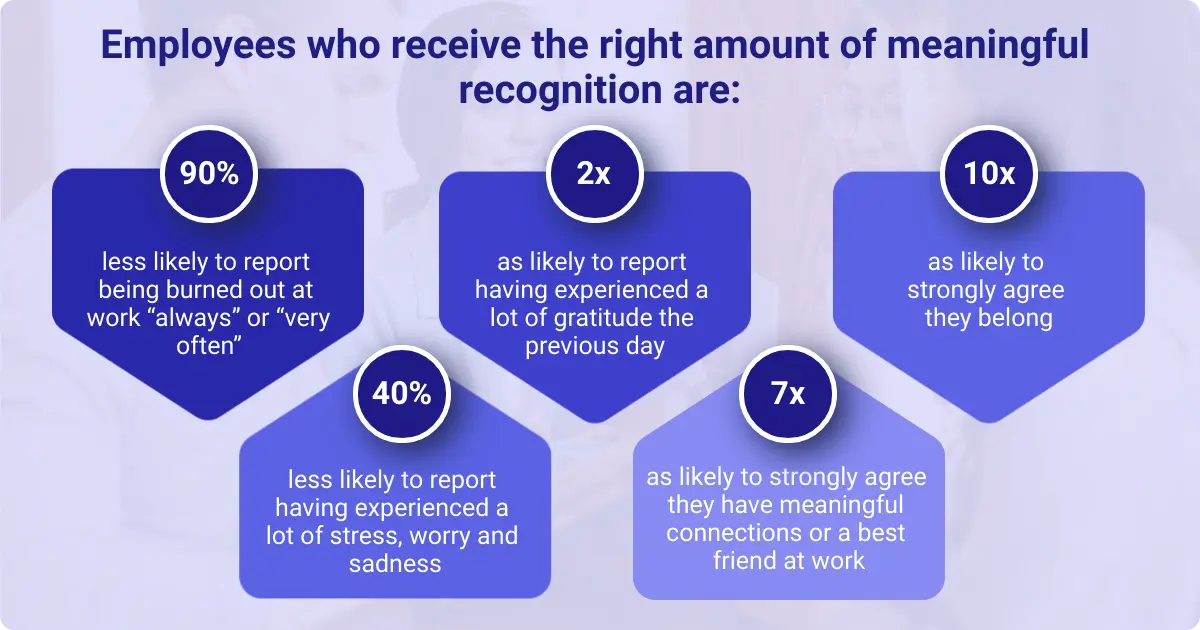How to Make Employees Feel Valued and Appreciated

Feeling appreciated at work goes a long way. It shows workers that their contributions matter and promotes a sense of safety, support, and connection. Knowing how to make employees feel valued fosters a more cohesive, positive culture that makes workers more motivated and invested in the work they do.
Making people feel valued is a multi-faceted endeavor – it’s not about any singular gesture. Rather, all of these gestures work in tandem to create a culture of appreciation. Keep this in mind as you design your people program.
Here are some key ways to make employees feel appreciated and valued.
Get to know your people
Feeling known breeds a sense of appreciation and value. How can you value your people if you don’t really know who they are, both at work and beyond?
Spend time getting to know your employees, from new hires to senior team members. You should know their strengths, interests, and areas of improvement for a basic understanding. Then, dig a little deeper to understand some of the challenges they face – a skill gap, parenting or caretaking responsibilities, lack of belonging due to an identity group – as well as what motivates them.
It’s important to treat your employees as the individuals that they are. You’ll likely need to adjust your management style per person in order to have productive conversations.
And all of this requires regular maintenance! Be sure to check in on a consistent basis with a monthly 1:1. These conversations can be both formal and unstructured, but they play a critical role in employee development.
They give insight into how your team members are doing, what they’re working on, what they feel is going well, and what they’re struggling with. But don’t focus on work exclusively – ask about team members’ home lives and hobbies to get a sense of their overall wellbeing.
These meetings are a great opportunity for feedback as well. Regular feedback helps employees feel clear on their standing as well as perform their best. Share thoughts on their latest projects, affirm what’s going well, and bring up any concerns or questions you (or they) might have.

When it comes to developmental conversations, it’s important that you say what you mean. Employees can sense insincerity, and they know when you don’t follow through on what you see you’re going to do. So, stay away from making any empty promises or saying anything misleading.
Compensation
Compensation conveys a baseline level of value. Loving what you do can only take you so far; feeling you’re paid fairly for it makes a big difference, especially when it’s such a foundational element. Fair pay can boost wellbeing, and workers who are thriving feel they’re paid fairly at a significantly higher rate (60%) than those who are struggling or suffering (30% and 18%, respectively).
For more information on how a culture of recognition can amplify the wellbeing of your employees, check out this Workhuman-Gallup report.
Compensation is about much more than just salary. Consider the full picture when creating your compensation packages so that you can attract and retain top talent:
- Equitable base pay
- Paid time off
- Paid sick leave
- Health and wellness benefits
- Bonuses, performance pay, and incentives
- Retirement matching
- Volunteer time
- Reimbursement for transportation or wellness initiatives
- Flexible schedules

And there’s a way to make compensation even more impactful: employees across all wellbeing levels are more likely to perceive their pay as fair if they experience great strategic recognition compared with their peers who have inconsistent or poor recognition experiences.
Appreciation and fair pay positively compound on one another. You can’t have just one to make up for the lack of the other. Use both strategies in tandem to ensure your employees feel valued from the start so they can support a thriving life.
Live your values
Company values don’t just hang on the wall. They are lived every day through company leadership, management, and employees, as well as every interaction between all of the above. It’s one thing to tell employees you value work-life balance, for example, and another to show it genuinely by encouraging time off for mental wellbeing.
Show your team members that their time and skills are valuable. Give them meaningful work with realistic deadlines. Prioritize quality time 1-on-1 between managers and employees while also giving teams adequate time to bond and socialize. Empower them to build solutions to problems while giving them the resources to do so.
Invest in your employees with continuous professional development. Offer them plenty of opportunities to upskill, try new things, and be mobile within the organization. Encourage them to develop their skill gaps as well as leadership skills. Professional development should serve their individual interests as much as benefit the organization at large.
Respect employees’ time by offering flexible work hours and office arrangements so they can work however makes the most sense for them. This indicates that you encourage autonomy and trust your workers. Establishing off-hour communication expectations can also help encourage boundaries and healthy communication styles.
Finally, make it clear how important recognition and appreciation is in your organization. Incorporate the languages of appreciation at work to ensure everyone feels valued in a way that resonates with them. Give new employees recognition within their first month to show that appreciation at work matters from day one. Ensure leaders and executives participate in the recognition program as much as everyone else does to encourage comprehensive opt-in.
Use recognition
Recognition is one of the simplest yet most effective ways to make employees feel appreciated. And we’ve got the numbers to back it up. Employees who receive the right amount of meaningful recognition are:
- Up to 90% less likely to report being burned out at work “always” or “very often.”
- Up to two times as likely to report having experienced a lot of gratitude the previous day and about 40% less likely to report having experienced a lot of stress, worry, and sadness.
- Seven times as likely to strongly agree they have meaningful connections or a best friend at work, and as much as ten times as likely to strongly agree they belong.

Not sure when or how to send recognition? Here are some examples of employee recognition. Any extra effort, stand-out performance, significant milestone, or meaningful gesture is a good time to send some recognition.
Download our exclusive report to learn how strategic employee recognition can benefit your organization. Here's what you'll discover in this must-read report:
1. The impact of recognition on business outcomes, including increased productivity, safer workplaces, and decreased absenteeism.
2. Strategies for implementing a recognition program that is fulfilling, authentic, equitable, embedded in company culture, and personalized to the individual.
3. Save your organization more than $90 million in gained employee productivity. Invest in your employees and your business success by embracing strategic recognition.
Remember to make it authentic. Employees can tell the difference! Sending recognition just for the sake of it can come across as shallow and performative. Make it mean something by being specific about your appreciation – what exactly stood out to you, and why was it valuable for the team or company?
Seek feedback
Finally, show your employees that their input matters by continuously seeking feedback. They have a vested interest in making company culture as strong and meaningful as possible and want to feel heard in doing so!
Pulse surveys are one of the best ways to solicit feedback on an organizational level. Include a mix of questions that enable employees to both rate cultural markers – i.e. “I feel appreciated for the work I do” – and fill in open-ended questions – i.e. “What do you think our work culture needs most right now?”
This ensures that employees can share a comprehensive perspective on how they feel about your organization’s culture.
Conclusion
Everyone is a little happier, more productive, and more engaged when they feel appreciated. By making it a cornerstone of your workplace culture, you’re showing employees that you care about their overall wellbeing and whole personhood – not just their output and productivity.
About the author
Maeve Ginsberg
A wellness enthusiast and the mid-day walk’s #1 fan, Maeve champions work-life balance.
Having gone from a corporate job to self employment, Maeve has lived through countless working styles. This evolution forced confrontation of her own limiting beliefs, eventually breeding a completely individualized approach to work and productivity.
As a Senior Copywriter, Maeve often writes on workplace wellbeing and strives to advocate for all workers and leaders to find small yet significant ways to make their work lives healthier and more fulfilling.
Offline, Maeve enjoys testing new cuisines and hanging upside down off walls (also known as bouldering).